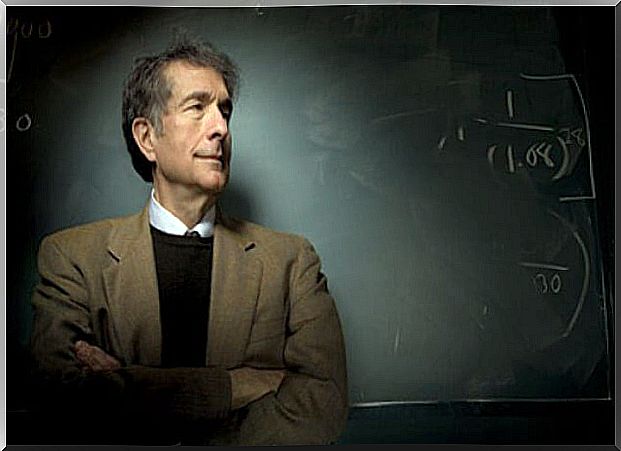Cognitive Psychology: What Is It, What Does It Consist Of And Who Formulated It?

Cognitive psychology is currently one of the most influential and effective therapeutic currents when it comes to recovering from mental disorders. Although the term “cognitive” is unusual in colloquial language, in the world of behavioral science it is used with great frequency. For the reader who is not particularly familiar with psychology, we will say that cognitive is synonymous with knowledge or thought.
Cognitive psychology, therefore, is dedicated to the study of human behavior that focuses on the unobservable, mental aspects that mediate between the stimulus and the overt response. Said in a more understandable language: cognitive psychology is in charge of knowing what ideas arise in the patient’s mind and how these influence their emotional and behavioral response – how they feel and what they do about it. Today we frequently use cognitive therapy to solve a multitude of psychological problems. This is because we have been able to observe how these cognitions or thoughts of which we speak influence, and even in many cases determine, the patient’s behavior.
Therefore, treatment from this perspective focuses on identifying those thoughts, beliefs and mental schemes that do not correspond to the surrounding reality. They can also be maladaptive, exaggerated or harmful approaches to the person himself. The professional will therefore try to question these internal realities through a debate consisting of asking questions that call into question those cognitions.
Once the person or the patient is able to identify and question their own beliefs, they will be ready to reformulate them and emit new cognitions, more adjusted to objective reality. Let us therefore see more data and aspects to understand in depth this psychological aspect.
The cognitive revolution
In the 1950s the prevailing paradigm was behavioral or learning psychology. Thus, and although he had managed to explain a multitude of psychological phenomena, he was still quite reductionist. He could only explain the observable. Anything that could mediate between stimuli and responses – the so-called behaviorist “black box” – was either considered an epiphenomenon or something irrelevant to observable behavior.
When the behavioral psychologist reached a dead end, he began to give importance to the phenomena that occurred in our minds. The focus of interest was put on everything that could go through our minds while we received a stimulus and gave a response. That is when the researchers began to study the processes of reasoning, language, memory, imagination …

The same happened with the psychoanalysis of Sigmund Freud, a current that also prevailed at the time and that was not capable of responding to a multitude of mental disorders despite the revolution that it had entailed.
Broadly speaking, there are some lines of research that gave rise to the emergence of cognitive psychology, such as:
- Advances in computing and computing (Turing, Von Neumann …) that allowed the creation of programmable machines. They were able to make decisions by making a simile with how the human mind processes information.
- Advances in cybernetics, hand in hand with Wiener.
- Information theories with Shannon, who conceived information as a choice and reduction of alternatives.
What authors formulated cognitive psychology?
As we have explained previously, cognitive psychology arises from the limitations of behaviorism. This approach was unable to explain, for example, why there are people who respond differently to another having received the same conditioning. The best-known representatives who helped cognitive psychology establish itself within the world of behavioral sciences were:
FC Bartlett
Frederic Charles Bartlett was the first professor of experimental psychology at the University of Cambridge. Its main postulate was the Theory of the schemes of the mind , by which it maintained that the thought, like the memory, are processes that can be reconstructed.
Through fables, which he read to the people who participated in his studies, he found that they were not able to remember them literally, even if they were read repeatedly. What he found, however, is that these people were more likely to remember what fit their previous mind-sets.
Jerome bruner
For this author, there are three forms of learning: the enactive, the iconic and the symbolic. He established that a theory of instruction must focus on four major aspects: predisposition to learning, the ways in which a body of knowledge can be structured, sequences to present the material, and finally the nature and rhythm of reward and punishment.
The most important part of his theory is the place of knowledge immersion for anyone who wants to learn. Thus, he emphasized the idea that a student would learn faster and faster if he engaged in the knowledge he was trying to acquire and applied it.
Howard Gardner
He formulated the famous theory of multiple intelligences, according to which intelligence would be the ability to organize thoughts and coordinate them with actions. Each person would have at least eight types of intelligence or cognitive abilities.
These intelligences are semi-autonomous, but they work as a team (integrated) within the person’s mind. Each person will also develop one or another type of intelligence to a greater degree than the others due to cultural emphasis. Likewise, it should be said that even though there is no clear evidence on the validity of this approach to intelligence, studies on this subject are carried out periodically. The University of Taiwan, for example, conducted research on it defending its usefulness in the educational field.

Jeffrey Sternberg
Sternberg is widely known for his triangular theory of love, according to which consummate love is made up of three elements: intimacy, passion, and commitment. In turn, he also postulated the triarchic theory of intelligence, which says that intelligence is a mental activity aimed at adapting, selecting and shaping relevant environments of the subject in question. Intelligence, according to him, would be demonstrated in how each of us face or promote changes.
David rumerlhart
He is a very influential author on schema theory. According to him, the schemes are representations of general concepts that are stored in our memory and that help us organize the world. His theory explains to us how the world is represented in our minds and how we use that information to interact with the world.
Jean piaget
Piaget is one of the most important authors for cognitive psychology. He formulated the theory of cognitive development in stages. These stages are characterized by the possession of qualitatively different logical structures that account for certain capacities and impose certain restrictions on children.
There are many other representatives of cognitive psychology, such as Vigotsky, Erickson or Ausubel that deserve a space on this list. In any case, his contributions were a revolution for psychology at that time and to understand what are the main strengths and shortcomings of the most popular current today, cognitive-behavioral.
Thus, thanks to the contributions of all of them, psychology has taken giant steps. In this way, although behaviorism is still in force today and is even combined with cognitivism, the latter has represented a great advance compared to what we knew decades ago, improving the treatment of different mental disorders.
Some with as much incidence as depression, for example. Likewise, as a study from the University of Pennsylvania shows us, it also shows high effectiveness in the treatment of post-traumatic stress, obsessive compulsive disorder, panic disorder, generalized anxiety disorder, social anxiety disorder and specific phobia.

Cognitive psychology today
Cognitive psychology is not without its limitations, either. Reasoned criticisms, and in many cases reasonable, that deal with the assumption that mental processes and behavior are separated and that the former precede the latter.
However, today it continues to be a weighty psychological setting within clinical practice. Nowadays, this approach also works in combination with neurosciences, thus allowing us to understand human behavior much better. We are therefore facing a highly valuable psychological perspective.









